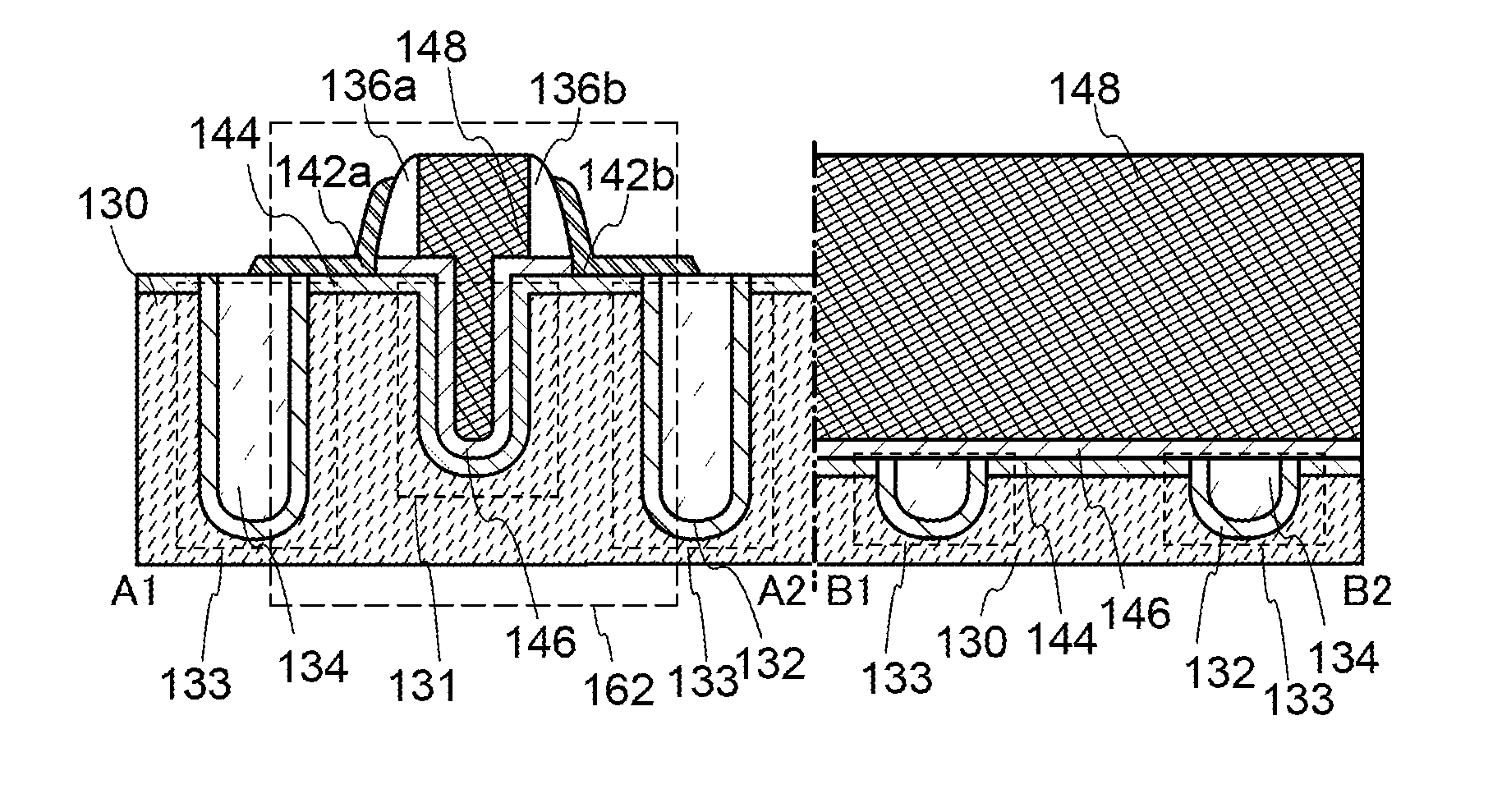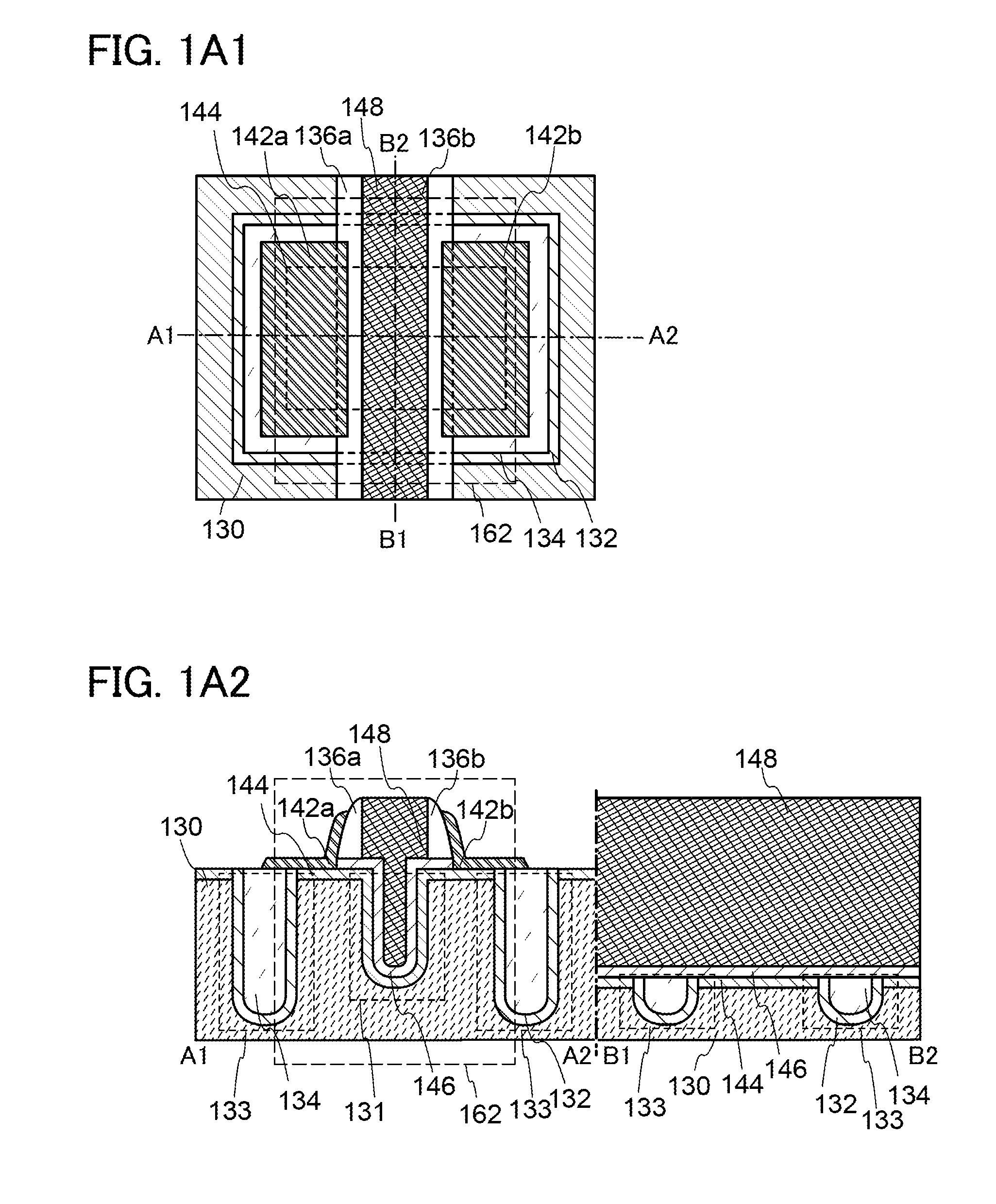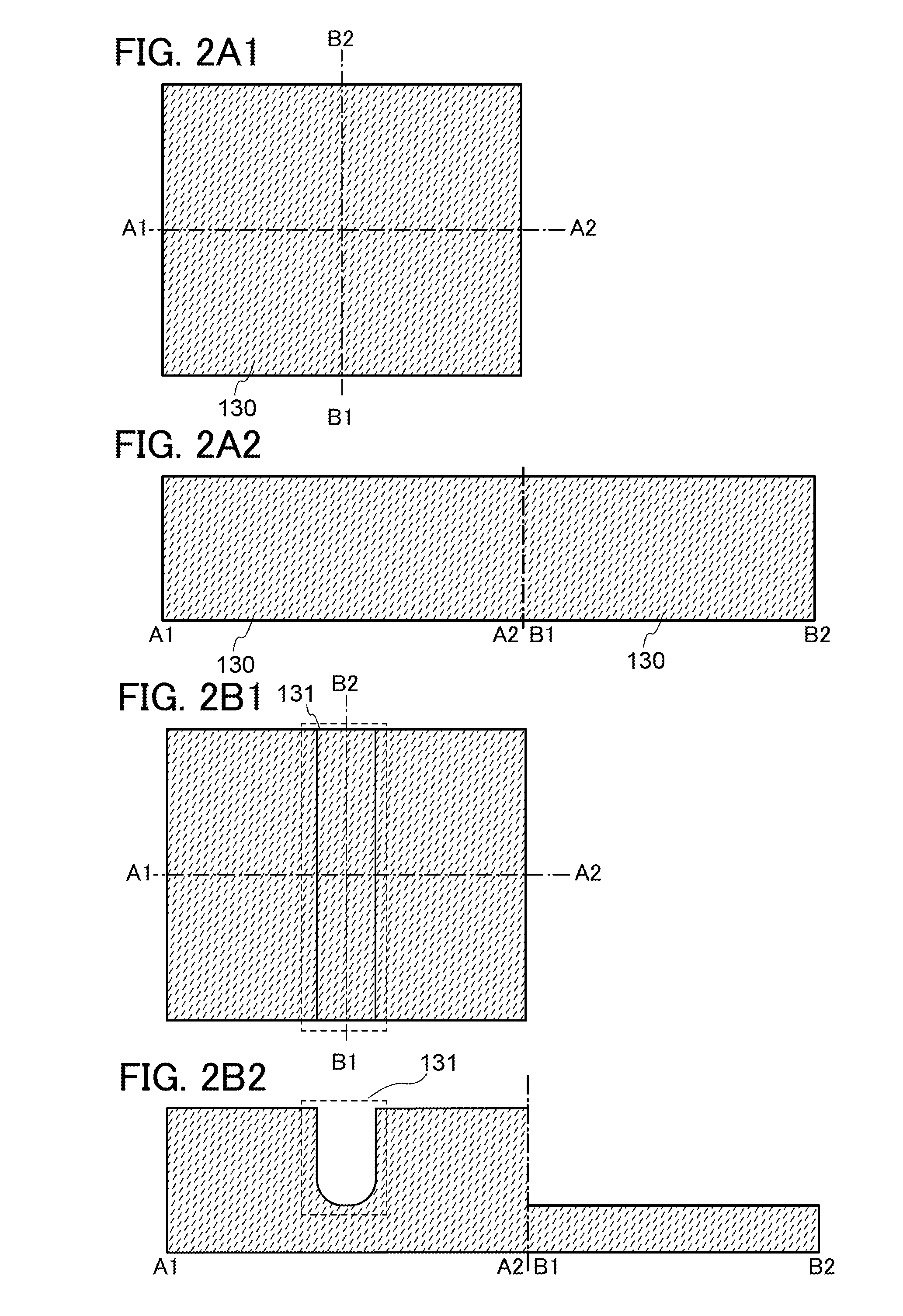Oxide semiconductor device including gate trench and isolation trench
a semiconductor and gate trench technology, applied in the direction of semiconductor devices, electrical devices, transistors, etc., can solve the problems of inadequacies of methods, deterioration of memory retention characteristics, and inability of transistors to function as switching elements, so as to achieve the suppression of short-channel effects, the frequency of refresh operation can be extremely low, and the power consumption can be adequately reduced.
- Summary
- Abstract
- Description
- Claims
- Application Information
AI Technical Summary
Benefits of technology
Problems solved by technology
Method used
Image
Examples
embodiment 1
[0048]In this embodiment, a semiconductor device that is one embodiment of the present invention and a manufacturing method thereof are described with reference to FIGS. 1A1 and 1A2; FIGS. 2A1, 2A2, 2B1, and 2B2; FIGS. 3A1, 3A2, 3B1, and 3B2; FIGS. 4A1, 4A2, 4B1, and 4B2; FIGS. 5A1, 5A2, 5B1, and 5B2; FIGS. 6A1, 6A2, 6B1, and 6B2; FIGS. 7A1, 7A2, 7B1, and 7B2; and FIGS. 8A1 and 8A2.
[0049]FIG. 1A1 illustrates an example of a plan view of a transistor 162 in this embodiment. Further, FIG. 1A2 illustrates cross-sections taken along the chain line A1-A2 and the chain line B1-B2 in FIG. 1A1.
[0050]The transistor 162 described in this embodiment includes an insulating layer 130 in which a first trench 131 and a second trench 133 are provided, an oxide semiconductor layer 144 provided in contact with a bottom surface and an inner wall surface of the first trench 131, an insulating layer 132 provided in contact with a bottom surface and an inner wall surface of the second trench 133, an insu...
embodiment 2
[0111]In this embodiment, an example of a semiconductor device which includes the transistor 162 described in Embodiment 1, which can hold stored data even when not powered, and which does not have a limitation on the number of write cycles, will be described with reference to the drawings.
[0112]Since the off-state current of the transistor 162 is small, stored data can be held for a long time owing to such a transistor. In other words, power consumption can be sufficiently reduced because a semiconductor device in which refresh operation is unnecessary or the frequency of refresh operation is extremely low can be provided.
[0113]FIGS. 9A to 9C illustrate one example of a structure of the semiconductor device. FIGS. 9A to 9C illustrate a cross-sectional view, a plan view, and a circuit diagram, respectively, of the semiconductor device. Here, FIG. 9A corresponds to cross sections taken along the chain line C1-C2, the chain line D1-D2, and the chain line E1-E2 of FIG. 9B.
[0114]The sem...
embodiment 3
[0135]In this embodiment, a semiconductor device which includes the transistor 162 described in Embodiment 1, which can hold stored data even when not powered, which does not have a limitation on the number of write cycles, and which has a structure different from the structure described in Embodiment 2, will be described with reference to FIGS. 10A and 10B and FIGS. 11A and 11B.
[0136]FIG. 10A illustrates an example of a circuit configuration of a semiconductor device, and FIG. 10B is a conceptual diagram illustrating an example of a semiconductor device. First, the semiconductor device illustrated in FIG. 10A will be described, and then, the semiconductor device illustrated in FIG. 10B will be described.
[0137]In the semiconductor device illustrated in FIG. 10A, a bit line BL is electrically connected to a source electrode or a drain electrode of the transistor 162, a word line WL is electrically connected to a gate electrode of the transistor 162, and a source electrode or a drain ...
PUM
 Login to View More
Login to View More Abstract
Description
Claims
Application Information
 Login to View More
Login to View More - R&D
- Intellectual Property
- Life Sciences
- Materials
- Tech Scout
- Unparalleled Data Quality
- Higher Quality Content
- 60% Fewer Hallucinations
Browse by: Latest US Patents, China's latest patents, Technical Efficacy Thesaurus, Application Domain, Technology Topic, Popular Technical Reports.
© 2025 PatSnap. All rights reserved.Legal|Privacy policy|Modern Slavery Act Transparency Statement|Sitemap|About US| Contact US: help@patsnap.com



